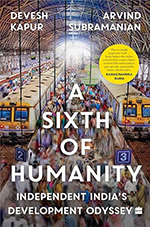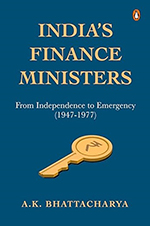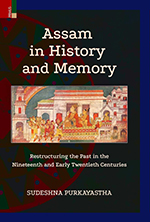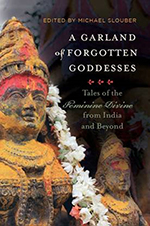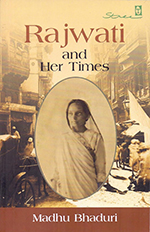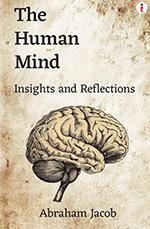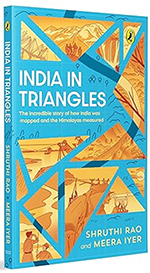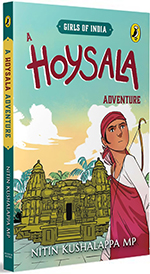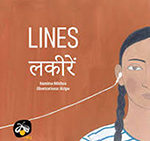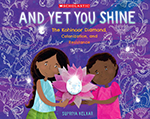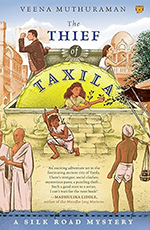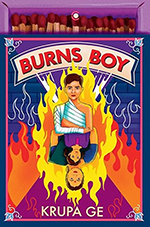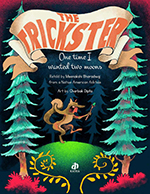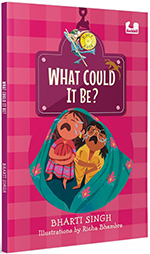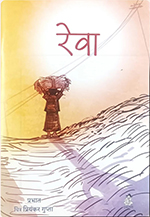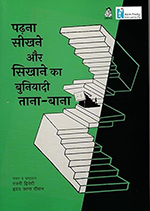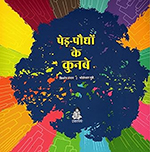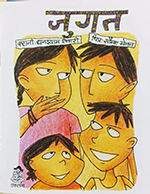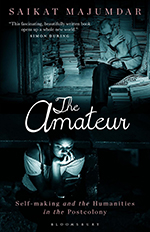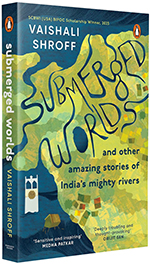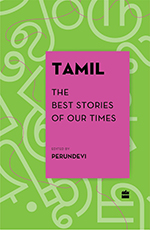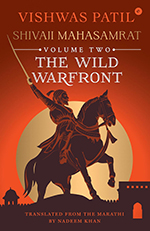The concluding part brings together the book’s core themes through three chapters that examine India’s development journey with both hindsight and forward-looking insight. These chapters confront the paradoxes and pathologies that have emerged over decades—such as the coexistence of democratic vibrancy with institutional fragility
The Congress came back to power in 1980 and late in 1981 it took a huge IMF loan whose condition forced austerity on the two Finance Ministers it had, R Venkataraman and Pranab Mukherjee. All things considered they both had an easy time because there were no major crises.
2024
The primary and secondary sources identified at the important archives listed in the book have been scrutinized, analysed and synthesized to arrive at these conclusions. They have been diligently recorded, and we provide a flavour here by illustratively mentioning a few authors:
The second section titled ‘Miracles and Devotees’ draws our attention to the shifting identities of Goddesses over the long centuries in the ramifications caused by potentates and political blocks.
2023
The chapter, ‘India, Indophiles and Indenture’, analyses the roles played by western exponents as interlocutors between the British officials and the Indian labour classes. Andrews and Pearson proved successful in calling attention to the plight of labourers in Mauritius, Fiji, and South and East Africa.
While depicting the story of a visionary’s life in minute detail, the authors have paid careful attention not to reduce the personality to a straitjacket. For instance, even though Karve was a rationalist who led by example, engaging enthusiastically even with the staunchest critiques of his magazine
Over four immersive chapters, Oza unravels for the reader what she is discovering. The first is on consent, where Oza deals directly with the question of ‘false cases’ to understand the complicated stories behind them, through the case of a consensual inter-caste relationship that when discovered becomes framed as a rape case by the family of the woman.
A brief life history of this remarkable lady must be narrated here to understand how without professing to be a radical feminist in her ideas, the protagonist was very open-minded even while functioning within the domestic parameters of her existence.
On his return to India Jagat Murari spent several years at the Films Division in Bombay. While very few readers would have seen or remembered his films, this section of the book introduces a major theme of the book, his problems with his bureaucratic superiors.
Subsequent chapters present biographical and intellectual portraits of seminal figures in modern psychology, including Freud, Adler, Jung, Erikson, Maslow, Rogers, Piaget, Bandura, William James, and Simone de Beauvoir.
Shruthi Rao and Meera Iyer in their India in Triangles have explained in easy-to-understand language the main principles of triangulation, and how this method was used for mapping the Indian subcontinent during the nineteenth century.
The first chapter details Devaki’s family, her daily duties during vacation days, she being a supporting daughter for her parents, nursing her ailing father and helping her mother with household chores. The author also through interactions between Devaki and her grandmother outlines the gender roles as decided within the families and how Devaki as a young educated girl questioned some of them.
The text is divided into four sections—an untitled Introduction, Nature and Society, People, and Environment. Four boxes are distributed through the text to highlight some aspects of the area, with 3 or 4 pages of photos at the end. A few highlighted questions are spread through the text.
2025
The clear-cut lines between the colours—mainly the earth colours of ochre, the rich blue of the precious stone lapis lazuli, and cyan, which is the light bluish-green associated with water and the sky—harmonize to create a landscape in the mind that goes beyond division and separation.

Edited by Anwesha Sengupta and Debarati Bagchi. Translated by Arunava Sinha. Illustrated by Kavita Singh
Initially published in Bengali as a series titled Itihase Hatekhori (loosely translated as First History Lessons), this effort was born out of the editors’ vision of creating non-standard history books for children. It is a kind of history-writing which falls neither within the bucket of drab,
Tracing the journey of Kohinoor, the exclusive diamond that changed hands over the centuries, the author brings out how British colonization took what was valuable from India and its different people.
The second story, ‘A Tale of Two Oxen’, follows Hira and Moti, two loyal oxen whose unbreakable friendship carries them through hardship. When cruel circumstances separate them from the comfort of home, they endure mistreatment under a harsh master but continue to embody resilience and solidarity. Beyond animal characters, the story speaks powerfully about loyalty, compassion, and the strength found in standing together.
The Thief of Taxila takes readers on a fascinating adventure through the lively, ancient city of Taxila. Mixing history, mystery, and friendship, this book is perfect for young readers who love a good puzzle and want to peek into India’s past.
The story happens a long time ago, during the rule of King Kanishka.
2025
Guru struggles with the trauma of the accident, his anger, and his broken relationship with his mother. His mother is weighed down by guilt, family responsibilities and social expectations, while trying to hold life together. Aparna, the younger sister, feels sidelined and wrestles with her own identity, as the family’s attention shifts toward Guru.
In this story, Coyote uses his magical wishing bone to play a trick on the villagers by creating two moons. First, he conjures the two moons and hopes someone from the village will notice them. A man passing by sees the two moons— ‘two moons’ with his own two eyes—and suspects that Coyote is behind it.
The illustrations expand the text in surprising ways, offering depictions beyond the familiar. We meet a mermaid in a wheelchair, a mer-guy cooking for his companion, a plump mermaid, and even glimpses of the lagoon’s fraught history of conflict and disaster.
The story is simple, age-appropriate, and colourfully depicted with well-designed illustrations that indicate a middle-class household. The print quality and the font size are age appropriate. There is enough mystery in the story to keep young readers engaged.
There’s a lot of information provided through this book, all of it in a fun and engaging manner: we learn about the porcupine’s habitat, preferred foods, predators, defence mechanisms, and more. We also get to see a broadly positive set of interactions between humans and this wild animal,
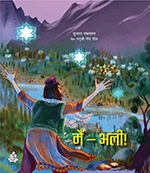
By Sujata Padmanabhan. Illustrations by Tanushree Roy Paul. Translated from the English into the Hindi by Vinatha Vishwanathan
Ali is brought up by his adoptive Apo, grandfather. There are a few words of the Balti language sprinkled throughout the text, a nice touch that introduces us to another culture, while remaining easily understandable in the context of the story.
Tanushree Roy Paul’s warm and detailed illustrations bring alive the love and joy, as well as the lingering grief that Ali and his families experience.
There is very little text in the book, and the illustrations are beautiful. They are full of emotions, showing expressions vividly. With just a few words,
2025
An attempt has been made to simply present the intricacies of a relationship between two ordinary people. But in doing so, it also brings out a picture of complex social perceptions, beliefs and systems in a seemingly regular society. In this story, two alternate situations are presented from time to time,
What is good about the books is that technical terminology and names of specific concepts have been written in the Devanagari script and given in English in brackets, for example, ‘zone of proximal development’ and ‘bottom-up model’, etc. On the other hand, in the case of a few articles, while it has been mentioned that the articles have been translated from English, and the source has also been mentioned,
One of the most enjoyable aspects of the book is how the authors complement scientific facts with common proverbs or couplets. For example, while discussing Apiaceae, they cite, ‘ऊँट के मुंह में ज़ीरा’, connecting the plants to familiar sayings, which makes them easier to remember.
2025
This twist in the story brings an interesting point to think about. On the surface, their trick works; they get the mangoes. But the method they use isn’t morally right.
Editorial
What gives Mrs Dalloway its distinction, however, is not the plot but the speculative and lyrical sensibility with which the heroine Clarissa is endowed. Though a ‘tinselly’ party-giver, she is yet shown to sympathize and even identify with a shell-shocked war veteran, Septimus Warren Smith, whom she has never met.
Through its exploration of colonial and postcolonial education policies, The Amateur reminds us, colonial education does not only alienate the subject from her culture but also uses education as a tool to impart and spread imperialism. The notorious Bantu Education Act (1953), which restricted resources for coloured students, was a stark institutionalization of ‘education apartheid’
The first story from which the book derives its title is about Abani, an adolescent who is accidentally left behind on a ship, completely unaware of his dangerous position as an ‘extra’. The ship’s captain, and the other officials don’t wish to jeopardize their immigration procedure in a foreign port with this unlisted sailor. A ruthless decision is taken to float Abani in a boat
2025
Jerry Pinto’s crisp and meaty introduction opens The Diamond-Encrusted Rat Trap: Writings from Bombay. ‘The 1970s were Bombay’s 1960s,’ he recalls Imtiaz Dharker’s words. The book gathers Jussawalla’s prose from 20 years, beginning 1980. There are articles, reviews
While countries like New Zealand, Colombia and Bangladesh have secured legal rights for their rivers, India appears to march blithely on, ignoring environmental laws and the rights of not only the people who are sustained by the waters but the rights of the rivers themselves.
The simple words effortlessly touch upon the unique experience of Indian women who face the duality of a culture that celebrates the divine feminine and simultaneously flounders to protect women from violence and indignity. The Stuti adds a note of optimism and wisdom that suffuses Lal’s writings and commitment to social causes. The anthology ends on a personal note celebrating her bond with her own mother.
The experiences of the main characters also provide two illuminating insights. The first is that it is not only men who travel away from the safety and security of home in search of a better life for their families. The second, especially in the context of this particular book, is that a well written story about complex human relationships and the capacity of individual men and women for generosity and meanness, loyalty and betrayal
The collection brings in formidable stories on the diaspora, showing how exile fractures belonging but also sharpens resistance. The story of Appadurai Muttulingam’s ‘Catch a Chunky Goat’ stands as a testament to it. While the protagonist’s courage and desperation to write the letter is to be appreciated, the series of events leave one confused about his guilt.
Vishwas Patil is a writer who thrives on dramatizing historical figures for popular consumption: Sambhaji, Netaji Subhas Chandra Bose, Anna Bhau Sathe, and now Shivaji. His strength lies in producing vivid, accessible portraits that can capture/consolidate public imagination.
Manto’s protagonists are the most marginalized members of society, portraying life in its very base and ugly form. The historian Ayesha Jalal in her book, The Pity of Partition: Manto’s Life, Times

